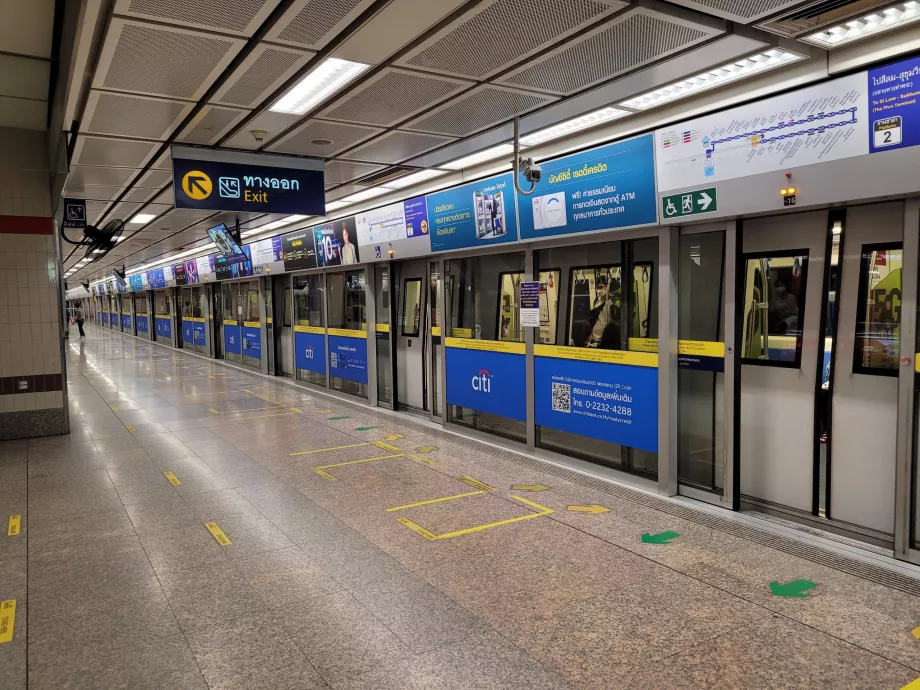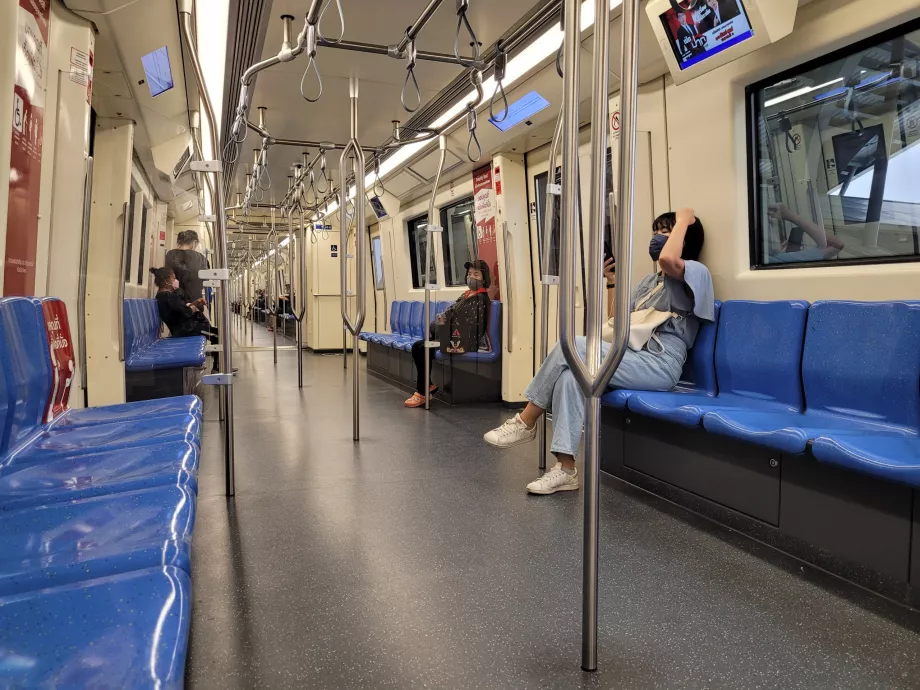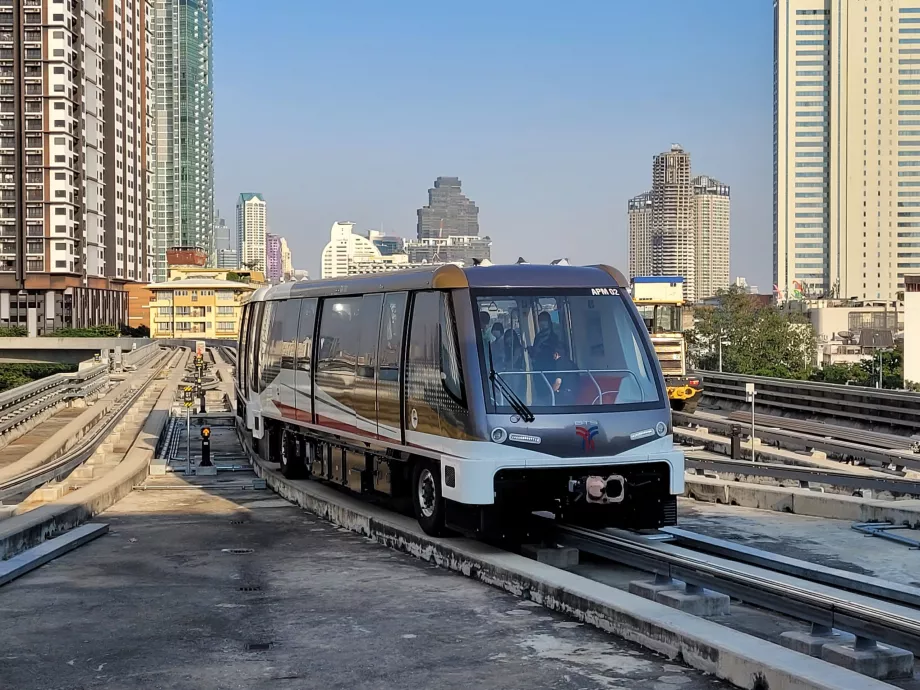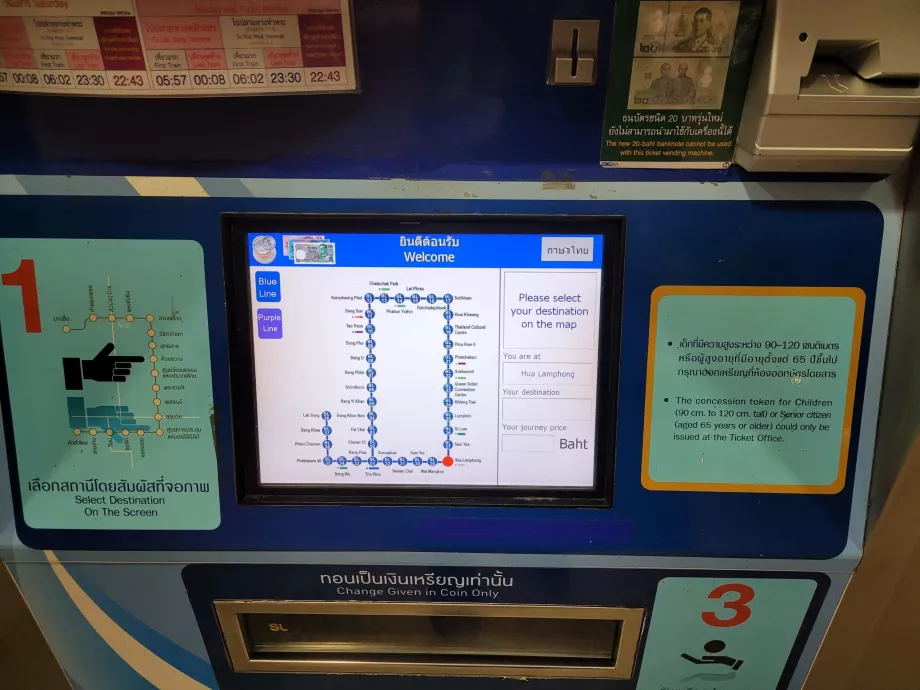Metro in Bangkok
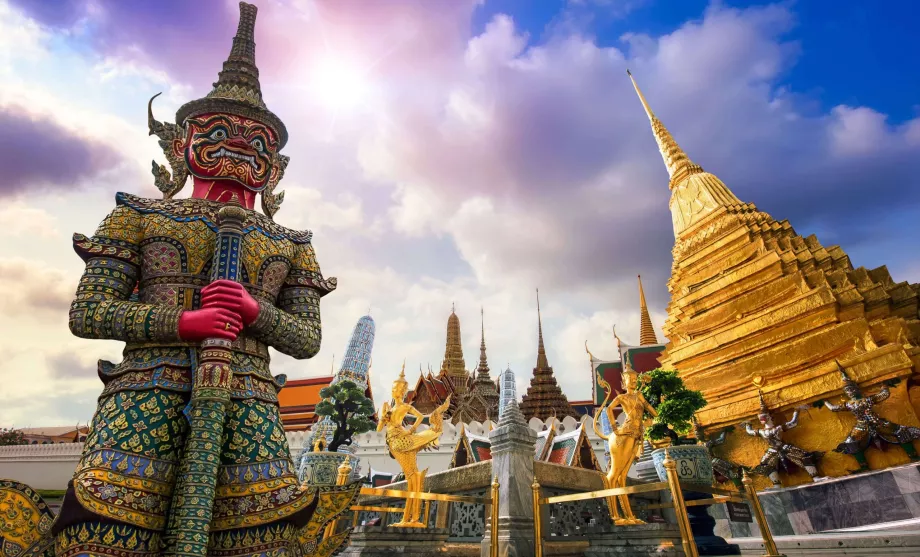
Bangkok's metro, along with boat transport, is one of the only relevant means of public transport for getting around the city. There are no trams and the bus service is extremely confusing. For information on all travel options, see the Transport chapter.
However, even the Bangkok metro has specifics that you won't encounter in other similarly sized cities.
Bangkok metro lines
The city is currently crisscrossed by 8 metro lines, or 1 line of the classic underground metro (running above ground at the edges), 6 lines of the pure overground running on elevated concrete corridors and 1 line of the overground automatic train.
Still, the metro is far from covering all directions and areas of the city, and it's hard to get around the city without additional taxi trips.
The metro is not a unified system, but is operated by 4 different companies that do not recognize each other's tickets.
Metropolitan Rapid Transit MRT
This system consists of three routes:
- Blue Circle Line (MRTA Blue Line) - passes through the historic centre and some areas of modern Bangkok popular for accommodation; it also goes to Bang Sue Central Station and stops near Mo Chit Bus Station. Important stations:
- Sanam Chai - historic centre, Wat Pho, Royal Palace + Wat Arun viewpoint
- Hua Lamphong - Golden Buddha, Chinatown
- Silom
- Sukhumvit
- Chatuchak Park - Chatuchak market, Mo Chit bus station
- Bang Phai - Wat Paknam Temple
- Purple Line (MRTA Purple Line) - From the transfer station to the blue line Tao Poon in the north of the city, it continues further north beyond Bangkok and is of no use to tourists
Official MRT website: metro.bemplc.co.th
The Blue Line is overwhelmingly underground, while the Purple and Yellow lines are completely above ground. The Blue Line is also the busiest of all the Bangkok Metro routes.
BTS Skytrain
This system operates two green lines - light and dark - which cross at Siam station.
- The light green line (Sukhumvit Line) - runs north-south through Bangkok, passing through the centre of Sukhumvit and Siam from tourist attractions, and also stops near Mo Chit and Ekkamai bus stations. Important stations include:
- Dark Green Line (Silom Line) - starts in the centre of modern Bangkok in the Siam district and continues across the river to the east of the city via the popular Silom district. Important stations:
- Siam
- Sala Daeng - Silom District
- Chong Nonsi - Mahanakhon skyscraper
- Krung Thon Buri - change to the golden line towards ICONSIAM
- Gold Line (Gold Line) - short route from the dark green line to the luxury shopping mall ICONSIAM
- Yellow line (Yellow Line) - runs in the eastern part of Bangkok and is not yet of much interest from a tourist point of view
- Pink Line (Pink Line) - runs in the northern part of Bangkok and connects, for example, the red metro line from Don Mueang Airport with the light green or purple line. The transfer from the airport line to the pink line is at Lak Si station.
Official BTS Skytrain website: www.bts.co.th/eng
All routes are above ground. The green lines have the character of classic metro sets, while the gold line is the so-called peoplemover, an automatic driverless train.
The gold line is also fare separated from the two green lines and a separate ticket must always be purchased.
SRT Railway
The final carrier is the Thai State Railway, which operates three electrified overground lines.
- Suvarnabhumi City Line (Airport Rail Link) - It connects modern downtown Bangkok with Suvarnabhumi Airport. Important stations:
- Phaya Thai - terminus with a transfer to the light green BTS line
- Makassan - northern edge of Sukhumvit district
- Red Line - connects Bang Sue Station in the north of the city with Don Mueang Airport
- Light Red Line - runs from Bang Sue Station eastwards to Taling Chan and has virtually no use for tourists
Official website: www.srtet.co.th
Bangkok subway map
As the official websites of the various systems do not provide high-resolution maps, we have created our own map of the current metro network in Bangkok.
Bangkok Metro Tickets
Each of the above 3 systems have their own tickets, plus the short Golden Line automatic train, which does not even recognize the tickets of the other two lines of the company that operates it.
If you transfer within one system (for example, from the light green to the dark green line or from the blue line to the purple line), there is no need to buy a ticket again when you transfer. However, if you are transferring between systems, you must always buy a new ticket.
How do I buy a ticket?
On some metro routes you can pay with your own contactless VISA card, elsewhere you can only buy tokens from a machine.
Tickets from the ticket machine
There are vending machines at each metro station that only take cash (coins and notes up to a maximum value of 100 baht). In addition, there is a service window at each station, but you cannot pay by card either. The advantage of the tills is that you can also change 500 and 1 000 baht notes.
The machine switches from Thai to English in the top right corner.
You then select the station you're heading to on the touchscreen map. The displays are old, so you may hit a different station the first time and have to repeat the process.
On the right side of the screen you will see the price you need to pay. There is no need to pay in exact value, just remember that the machine only ever returns in coins.
A black token (for MRT, SRT and Airport Rail Link) or a paper ticket (for BTS Skytrain) will fall out of the machine, which you then use at the turnstile. When you enter, you simply place the token/ticket in front of the reader. Remember to keep the token/ticket for the entire journey. When you exit, you then insert the ticket or token into the turnstile and leave it there, releasing it.
- This system works on all metro lines
Your own contactless card
Only on the MRT system lines (i.e. the main blue circle and purple circle towards Nonthaburi) can you also pay with a contactless card. Currently, only VISA cards can be used for payment.
Simply attach the card to the reader at the turnstile when entering the station and then when leaving the station.
Ticket prices in Bangkok
All metro systems are always charged by distance travelled.
The lowest price (usually 1 or 2 stops) is 15 thb, then the highest price is between 40 thb and 50 thb, but then you have to go almost all the way across town. On average, you will pay something around 30 thb.
For the BTS Skytrain system (light + dark green line) there are also day passes valid only for a given calendar day. You don't buy these at a machine, but only ever at a ticket office with live staff. Again, these day tickets can only be used for that system. A day ticket for BTS lines costs 140 thb.
For the MRT system, instead of a day ticket, you can buy a Stored Value Card for 180 thb (value 100 baht for the fare + 80 baht for the ticketing). However, you can reload the card for any amount (always cash only). However, fares are no cheaper than using tokens, so the only added value is the convenience of not having to re-purchase a fare every time you enter the subway.
Timetables and intervals
All metro lines in Bangkok leave for the line between 5:15 and 5:30am from the terminus stations, i.e. from the city centre around 6:00am. The last trips are between 23:20 and 23:40 from the termini, i.e. from the centre around midnight.
Intervals on the Blue and both Green lines are between 5 and 10 minutes, shorter in the morning and afternoon, longer at midday and at weekends (but no more than 10 minutes).
When travelling to Suvarnabhumi BKK airport, the interval is 10-15 minutes, while to Don Mueang DMK airport it is 12-20 minutes.
Metro trains
All metro trains are modern and air-conditioned. Sometimes even over-air-conditioned, and the difference between the temperature outside and inside the train of over 15 degrees is no exception.
The trains and stations are spotlessly clean and travelling by metro in Bangkok is very safe.
Any questions left?
If you have any questions or comments about the article...

